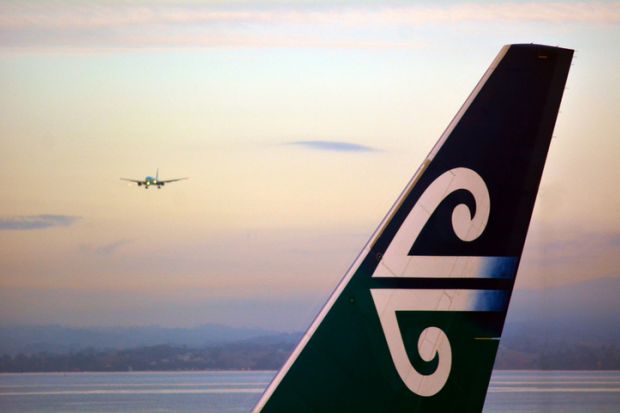Some international students are spurning the opportunity to penetrate New Zealand’s tightly closed borders, while thousands more have had their visa applications “lapsed” in the latest blow to the country’s education exports.
The government announced in October that it would allow up to 250 PhD and master’s students back into the country under an “exception to our border restrictions”. In December, it extended the welcome mat to another 1,000 continuing bachelor’s and postgraduate students. But universities are still waiting for many to show up.
Universities New Zealand chief executive Chris Whelan said take-up of the exemptions had been “significantly lower” than anticipated. Many initially enthusiastic students were deterred by the rarity and expense of flights and quarantine costs of up to NZ$5,520 (£2,800) per person.
“We ended up with those students coming in a lot more slowly than we had expected,” Mr Whelan told Times Higher Education’s THE Live ANZ conference. “Realistically, it takes five or six months from making an offer to a student to being able to get that student here.”
Some students proved unexpectedly price sensitive, deciding that “finishing off online is easier”, Mr Whelan said. Others opted to defer their return until after the summer break, in February or March next year when “flights are more frequent and hopefully cheaper”.
Separately, Immigration New Zealand has quashed temporary visa applications that were submitted from outside the country before visa processing was suspended on 10 August last year. Officials plan to refund fees to some 50,000 applicants, including many students.
Mr Whelan said it was a “disappointing” development, but the students had little prospect of getting to New Zealand anyway. “Our immigration services said [that] whenever the government approves students to arrive, they’ll be able to process visas again quickly,” he said.
“We are now working to that five- or six-month time frame, trying to get agreement from our government to start bringing in more cohorts of students.”
In Australia, state government schemes to fly in relatively small groups of international students have stalled amid Covid outbreaks in Sydney, Brisbane and now Melbourne. The federal government plans to allow overseas students to enter in greater numbers when domestic vaccination rates reach 70 to 80 per cent.
Universities Australia (UA) chief executive Catriona Jackson said her members could not afford to sit back and wait for vaccination levels to rise. “It takes quite a long time for students to get all the ducks in a row to travel,” she said. “They’ve got to get their visas sorted out, and that can be quite a lengthy process.
“It’s not like going to the football – buy a ticket, you’re in. They can’t just decide one day and come the next. We’ve got to give them time to plan.”
Ms Jackson said every Australian university had been working with its state or territory government, with UA lobbying at the national level “to try and get plans in place”.
“We [want to] give students some sort of certainty, in a world in which there is almost no certainty about anything at the moment.”
Register to continue
Why register?
- Registration is free and only takes a moment
- Once registered, you can read 3 articles a month
- Sign up for our newsletter
Subscribe
Or subscribe for unlimited access to:
- Unlimited access to news, views, insights & reviews
- Digital editions
- Digital access to THE’s university and college rankings analysis
Already registered or a current subscriber? Login








